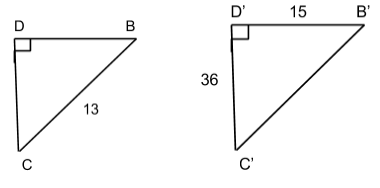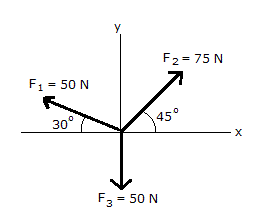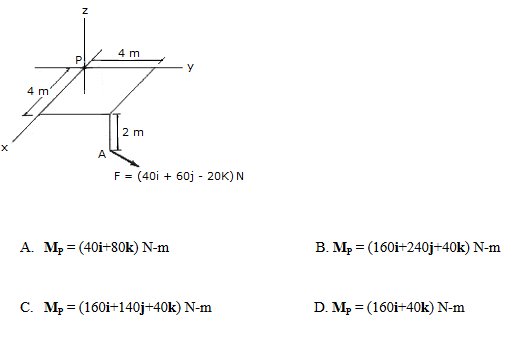Engineering Mechanics is one of the basic topic that comes under Mechanical engineering aptitude test. Engineering Mechanics is an analytical tool that enables an engineer to optimize a design, that is strong and rigid to use. Physics is the basis for Mechanical aptitude.Statics and dynamics are the subdivisions of Engineering Mechanics. Here we present you with problems on all topics that comes under Engineering Mechanics.
1) Questions: Find the value of a, s, k from the following equation
–a + s + k = –1 ; a + 2s – 2k = 5 ; a – s + k = –1 ; calculate the value of a, s, k
A. a = -1, s = 1, k = –1 B. a = 1, s = 1, k = –1
C. a = 1/2, s = 3/2, k = –1 D. a = 1, s =- 1, k = 1
Answer : Option B
2) Question : Forces are said to be concurrent when their lines of action meet in
A. Perpendicular plane B. Parallel plane
C. 2 points D. 1 point
Answer : Option D
3) Question : If right angle DBC is similar to right angle D’B’C’. Determine the length of side DB

A. DB = 5 B. DB = 6
C. DB = 5.24 D. DB = 7
Answer : Option A
4) Question : A car is free to roll during the collision, calculate the average horizontal collision force causing the deformation. If a car of mass 2 Mg strikes a smooth, hard sign post with an initial speed 30 km/h. To halt the car, the front end horizontally de-forms 0.2 m.
A. Favg = 1147 kN B. Favg = 347 kN
C. Favg = 9145 kN D. Favg = 340 kN
Answer : Option B
5) By adding the rectangular components of the three forces. Determine the magnitude of the resultant force

A. R = 35.78 N B. R = 37.03 N
C. R = 29.7 N D. R = 20.9 N
Answer : Option C
6) Question : Effect of a force on a body depends upon
A. Magnitude B. Direction.
C. Both A and B D. None of the above
Answer : Option C
7) Question : Determine the projection of the moment of a force about the hinged axis z. If a force of 50 N is applied to the handle of a door. Neglect the size of the doorknob.
P.S - Use a scalar analysis.
A. Mz = 15.9 N-m B. Mz = 11.9 N-m
C. Mz = -11.9 N-m D. Mz = -15.9 N-m
Answer : Option D
8) Questions : Among the following do not have identical dimensions ?
A. Moment of a force and angular momentum. B.Torque and work
C. Momentum and impulse D. None of the above
Answer : Option A
9) Questions : Determine the horizontal and vertical components of the impulse of a golf ball , if its mass is 40 g and struck such that it has an initial velocity of 200 m/s .
A. Impx = 8.93 N-s, Impy = 3.00 N-s B. Impx = 4.00 N-s, Impy = 6.93 N-s
C. Impx = 3.00N-s, Impy = 8.93N-s D. Impx = 6.93 N-s, Impy = 4.00 N-s
Answer : Option D
10) Question : Determine how long it takes for the cylinder to stop spinning if its mass is 50-kg and has an angular velocity of 30 rad/s when it is brought into contact with the horizontal surface at C. If the coefficient of friction is µc = 0.2 . Estimate the force developed at the pin A during this time? The cylinder axis is connected to 2 symmetrical links. ( P.s : AB is only shown.) For the computation, minus the weight of the links.

A. t = 3.06 s, A = 49.1 N B. t = 1.529 s, A = 49.1 N
C. t = 2.129 s, A = 47.1 N D. t = 1.529 s, A =0
Answer : Option B
11) Questions : The weight of a body is due to
A. force of attraction experienced by particles B.centripetal force of earth
C. Gravitational pull exerted by the earth D. None of the above
Answer : Option C
12) Question :Determine the length of side AB of the right triangle. Using the basic trigonometric functions.
A. h = 13 B. h = 15
C. h = 17 D. h = 10
Answer : Option D
13) Questions : Use a vector analysis and express the result in Cartesian vector form. To determine the moment of the force at A about point P.

Answer: Option A
14) Questions : A train travels along a horizontal circular curve that has a radius of 200 m. Determine the magnitude of the acceleration at the instant the speed of the train is 40 km/h, If train speed is uniformly increased from 30 km/h to 45 km/h in 5 s.
A. a = 0.37 m/s2 B. a = 1.097 m/s2
C. a = 1.937 m/s2 D. a = 1.037 m/s2
Answer : Option D
15) Question : Determine the time required to stop the car and the distance traveled before stopping.If a car is traveling at a speed of 80 ft/s when the brakes are applied suddenly which causes a constant deceleration of 10 ft/s2.
A. t = 4 s, s = 140 ft B. t = 8 s, s = 240 ft
C. t = 8 s, s = 320 ft D. t = 6 s, s = 240 ft
Answer : Option C
